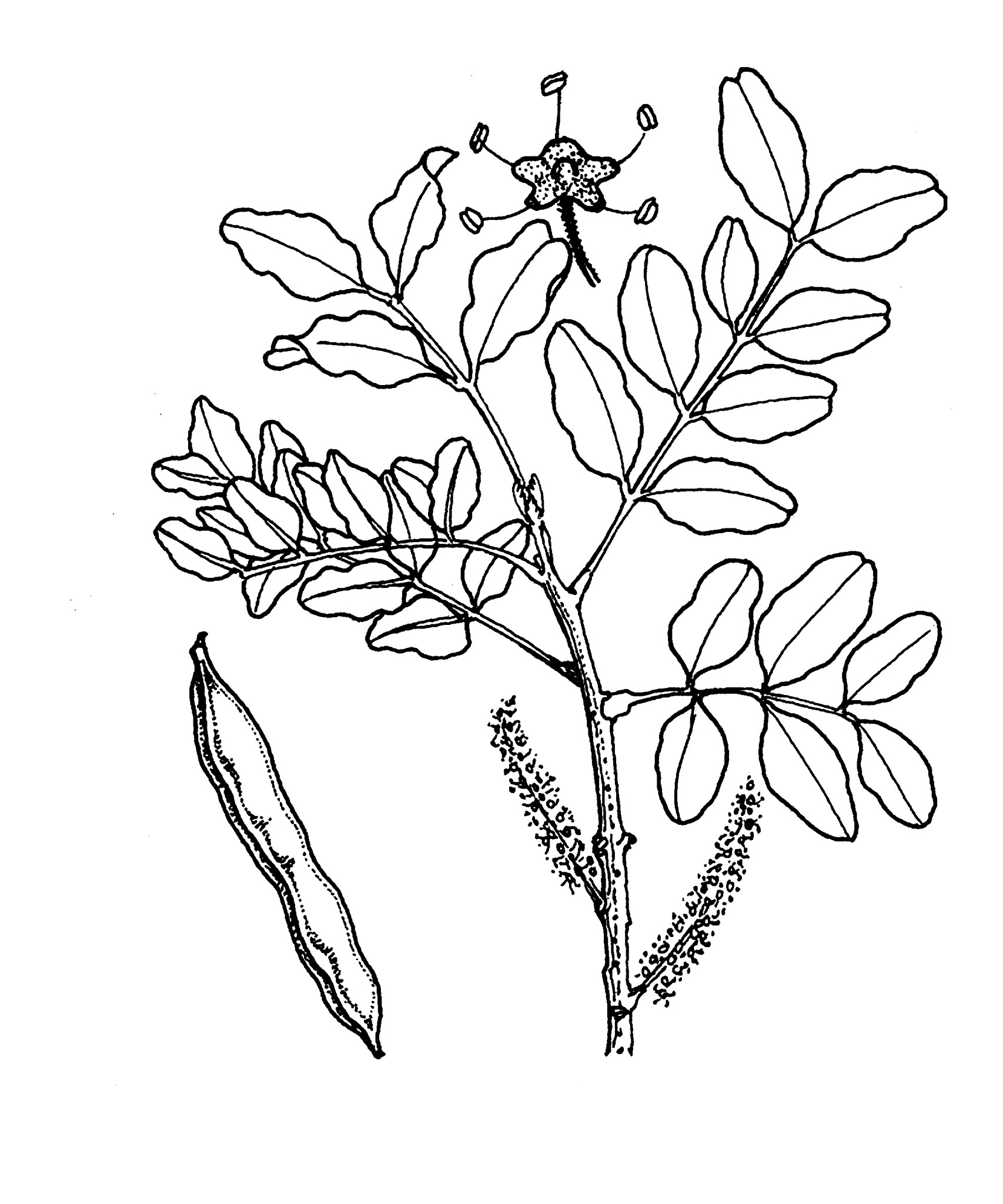
A broad-crowned tree to about 4 m tall. Leaves alternate, pinnate, 10-20 cm long, with 3-5 pairs of entire leaflets. Leaflets oval or obovate, 5-8 cm long, 4-6 cm wide. Flower clusters in 4-10 cm-long clusters in the leaf axils. Flowers unisexual but flowers of both sexes occasionally occurring on the same tree. Fruit pods 10-25 cm long, 3-4 cm wide.
Widely cultivated in warmer districts such as NWVic, where the fruit pods are more prolific than in cooler districts such as Melbourne. Naturalised in NSW.
Selected varieties include 'Casuda' from Spain, 'Sfax' from Tunisia, 'Tylliria' from Cyprus and, from California, 'Badan', 'Clifford' and 'Santa Fe'.
E Mediterranean.
Animal fodder; pods eaten as a snack (tasting a little like chocolate) or fermented into wines and brandy; the disk-like seeds are highly nutritious and of uniform weight (about 200 mg, the carat, unit of weight for gold and precious stones).
VIC: Buninyong (Bot. Gds); Frankston (Hallan Park Homestead); Mildura (Deakin Ave, High School, Memorial Gds); Mont Albert (Primary School); St Arnaud (Bot. Gds); Swan Hill (Museum); Wangaratta.
Source: (2002). Caesalpiniaceae. In: . Horticultural Flora of South-eastern Australia. Volume 3. Flowering plants. Dicotyledons. Part 2. The identification of garden and cultivated plants. University of New South Wales Press.
